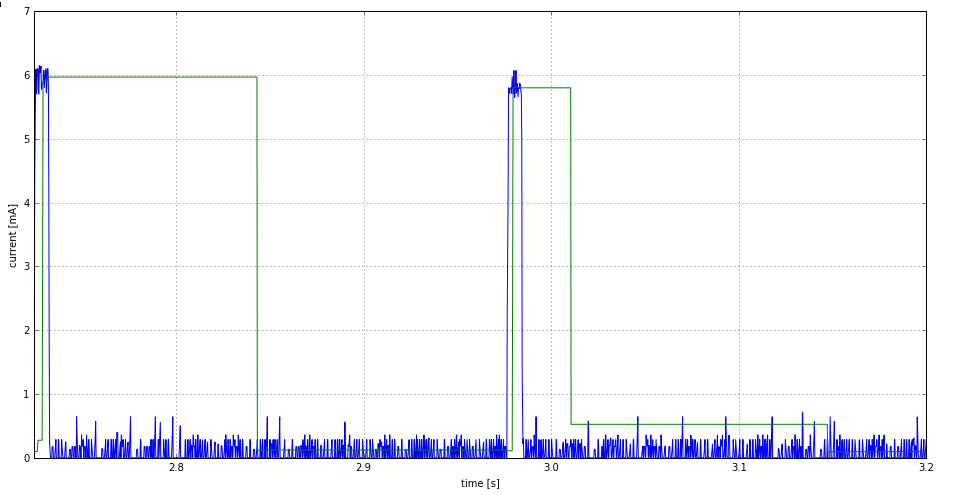Hi there,
while experimenting with the MSP430FR4133 Launchpad I noticed that the current measured by EnergyTrace doesn't match up with the current measured using a shunt resistor.
To extract the EnergyTrace data in an easy way, I wrote a small application (see https://gist.github.com/carrotIndustries/f0a09b7224a2ecefb247) using the EnergyTrace functions from the libmsp430 library. I checked with CCS to confirm that my programs reads the data correctly.
The green trace shows the current directly measured by the ezFET, the blue one shows the current calculated from the energy value reported by the ezFET. The latter one resembles the current measured with a low-value (1 Ohm) shunt and a Tek 7A22 differential amplifier much more than the first one.
Can someone explain what's going on? Is this due to the measurement principle, or am I doing something wrong?
Regards,
Lukas



